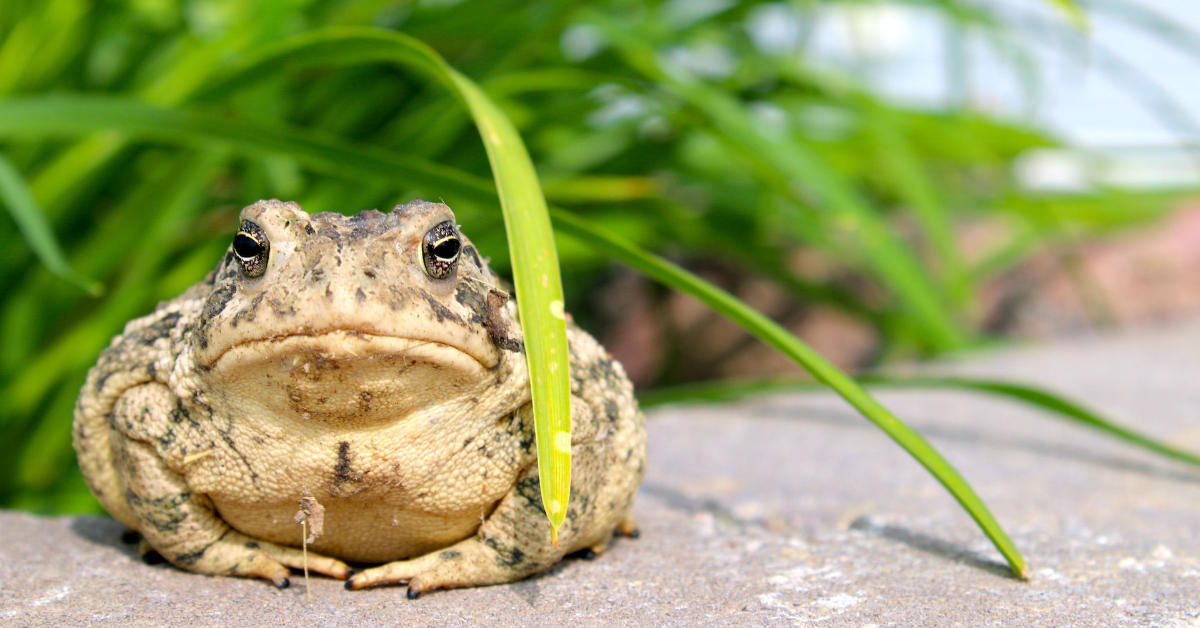Exploring the Fascinating World of Toads: Interesting Facts and Information

Toads are a type of amphibian that can be found on every continent except Antarctica. They are characterized by their dry, warty skin, short legs, and rounded bodies. Toads are most commonly found near sources of water and feed on a variety of insects and other small prey.
They are usually active at night and are most commonly heard during the breeding season when the males produce a loud, distinctive call. Toads are considered beneficial to humans because they help control insect populations and are sometimes used in traditional medicines. Their skin secretions have also been used as a source of chemicals for a variety of purposes.
Interesting Facts About Toads
- Most toads are capable of producing toxins that can be harmful to predators, and they often have bright colors or patterns on their skin as a warning to potential predators.
- Some species of toads, such as the cane toad, are considered invasive species and have caused environmental damage in some areas.
- Toads have long been associated with magical or supernatural powers in many cultures, and they are often featured in folklore and mythology.
- Unlike frogs, toads generally have shorter hind legs and are not as agile or adept at jumping.
- Many species of toads are facing threats from habitat loss, pollution, and climate change, and some species are considered endangered or vulnerable.
- Some species of toads, such as the American toad and the European toad, are commonly kept as pets.
- Toads are ectothermic, which means that they are unable to regulate their body temperature internally and must rely on external sources of heat to maintain their body temperature.
- Some species of toads, such as the African toad, are known to form large breeding aggregations, with hundreds or even thousands of individuals gathering in a single location to mate.
- Toads have a complex life cycle that involves both aquatic and terrestrial stages. After hatching from eggs laid in water, toad tadpoles undergo a metamorphosis into adult toads, during which they develop legs, lose their gills, and develop the ability to breathe air.
- Some species of toads, such as the marine toad, are highly aquatic and spend most of their lives in or near water, while others, such as the desert toad, are adapted to life in arid environments.
- Some species of toads are able to change color to match their surroundings, which helps them to avoid predators and regulate their body temperature.
- Toads have a unique way of moving, known as “walk-hopping”, in which they use their front legs to push off the ground and their back legs to propel themselves forward.
- Unlike many other amphibians, toads do not have a vocal sac and are unable to produce the distinctive “croaking” sound that is commonly associated with frogs.
- Many species of toads are able to produce a wide range of sounds, including grunts, clicks, and whistles, which they use for communication and territorial defense.
- Unlike most other amphibians, toads do not have a larval stage and do not undergo metamorphosis in the same way that frogs do. Instead, toad eggs hatch directly into miniature versions of adult toads, known as toadlets.
- Toads are generally less tolerant of cold temperatures than frogs and are more likely to enter a state of torpor, in which their metabolic rate slows down and they become inactive, during cold weather.
- Some species of toads, such as the cane toad, are known to be highly toxic and can be harmful to humans if ingested.
- The female toad typically lays a large number of eggs, which are then fertilized by the male and left to develop on their own. Unlike frogs, toads do not provide any parental care for their young.
- The skin of toads contains a variety of glands that produce a variety of substances, including toxins, hormones, and antimicrobial compounds. These substances can be used for defense, communication, and regulating body functions.
- Unlike most other amphibians, toads have a well-developed sense of sight and are able to see objects in fine detail, even at a distance. This allows them to hunt and avoid predators more effectively.
- Toads are generally slow-moving animals, and they are not particularly good at climbing or jumping. This makes them vulnerable to predators, such as birds, snakes, and mammals.
- Despite their slow movement, toads are able to move quickly when necessary, and they can use their strong hind legs to escape from danger by hopping or running.
- Many species of toads are solitary animals and do not form social groups or communities. However, some species, such as the American toad, are known to form loose aggregations during the breeding season.
- The diet of toads varies depending on the species and the availability of food in their environment. Most toads feed on insects and other small invertebrates, but some larger species may also eat small vertebrates, such as mice or fish.
- Unlike frogs, which are adapted for catching fast-moving prey, toads are better suited for capturing slow-moving or stationary prey. They use their sticky tongues to catch their prey and then swallow it whole, without chewing.
- Toads have a highly developed sense of smell, which they use to locate food and identify potential mates. They also have sensitive skin that can detect changes in temperature and humidity, which helps them to avoid dehydration and regulate their body temperature.
- Toads are not considered to be a major threat to humans, and they are not known to carry any diseases that can be transmitted to humans. However, some species, such as the cane toad, are toxic and can be harmful if ingested.
- Unlike most other amphibians, toads do not undergo a drastic change in appearance during metamorphosis. Instead, they gradually develop from toadlets into adult toads, with only minor changes in their appearance.
- Many species of toads are declining in numbers due to habitat loss, pollution, and climate change. Some species are considered endangered or vulnerable, and conservation efforts are underway to protect these species and their habitats.
- Unlike frogs, which are found in a wide variety of habitats, toads are mostly found in terrestrial environments, such as forests, grasslands, and deserts. However, some species, such as the marine toad, are highly aquatic and can be found in or near bodies of water.
- Many species of toads are active only at certain times of the year, and they may enter a state of torpor or hibernation during the colder months of the year. This allows them to conserve energy and avoid cold temperatures.
- Toads are generally nocturnal animals and are most active at night. They are most commonly heard during the breeding season when the males produce loud calls to attract females.
- The lifespan of toads varies depending on the species and the environment in which they live. In general, toads are thought to live for several years, but some species may live for over 10 years.
- Some species of toads, such as the American toad, are known to migrate over long distances, often covering hundreds or even thousands of miles in a single year. These migrations are thought to be related to the availability of food and breeding sites.
- Unlike most other amphibians, toads do not have a well-developed sense of touch and are not particularly sensitive to tactile stimuli. Instead, they rely more on their sense of sight and hearing to navigate their environment and avoid predators.
- Many species of toads are able to change color to match their surroundings, which helps them to avoid predators and regulate their body temperature. This ability is more pronounced in some species, such as the South African pygmy toad, which can change color from dark brown to almost white in a matter of hours.
- Some species of toads, such as the American toad, are known to produce a milky or toxic substance from their skin when they are threatened. This substance is thought to be a deterrent to predators and can cause irritation or even death in some animals.
- Toads are an important part of many ecosystems, as they help to control insect populations and serve as prey for a variety of predators. They are also sometimes used in traditional medicines, and their skin secretions have been used as a source of chemicals for a variety of purposes.
Related articles before concluding with this article:
- Exploring the Fascinating World of Toads: Interesting Facts and Information
- Herpetology: Exploring the Fascinating World of Amphibians and Reptiles
- 10 Fascinating Facts About Lizards That Will Make You Want to Learn More
Conclusion
In conclusion, toads are fascinating and often misunderstood amphibians that play an important role in many ecosystems. With their distinctive appearance and behavior, toads have captured the imagination of people around the world and have been featured in folklore, mythology, and literature.
Despite their beneficial role in controlling insect populations and their potential use in traditional medicines, many species of toads are facing threats from habitat loss, pollution, and climate change. More research and conservation efforts are needed to protect these unique and fascinating animals and ensure their continued survival.
Hashtags
#toads #amphibians #nature #conservation #ecosystems #wildlife #animals #frogs #herpetology #environment #habitatloss
You can use these hashtags when sharing this post on social media.
If you enjoyed this article about Toads, the beings that just look like frogs, don’t forget to share it with your friends on social media, and don’t forget to subscribe to our YouTube channel.





